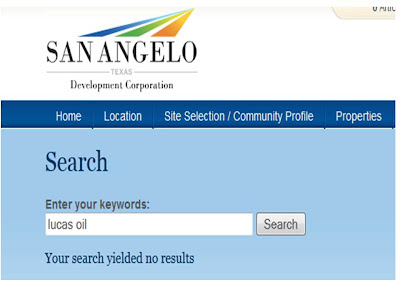Martifer withdrew from its wind tower joint venture with Hirschfeld Industries, giving Hirschfeld 100% ownership. This news is the latest in a series of setbacks from their original vision. The plant opened a year late and failed to deliver the number of jobs anticipated. Consider this
Standard Times 2011 report:
Richard Phillips, President of Hirschfeld Industries, said the plant maintained about 25 employees during 2010 and
has hired about 20 people so far this year with plans to hire up to 125
more in the next half year. That's more than 50 people short of what the
plant said it would hire in the coming years, but Phillips said the
plant could end up hiring up to a few dozen more employees.
That totals 170 employees by the end of 2011. Sean Lewis, Director of Community and Economic Development for the City of San Angelo stated:
"Our goal with the project has been to create jobs and that is the
development corporation's ultimate priority, so while we would've loved
to have seen these jobs created last year with the federal tax
implications with the wind industry and with a slow economy, we do feel
very good that production has started on the towers and that they are
ramping up employment, even if it a year later than we were hoping."
Hoping or planned? Fast forward to today. Hirshfeld Wind is virtually gone, renamed Hirschfeld Energy Systems. The only products it promotes on its website are oil and gas related. However, it still makes wind towers under contract to other firms, including Siemens. The plant employs 125 people, 45 fewer than their revised estimate, 100 fewer than their original representation.
City, county, state and federal governments threw $22 million in tax incentives/abatements at Martifer-Hirschfeld.
In 2010 the City of San Angelo budgeted $2.64 million in incentives, paid nearly $1.3 million with the expectation the complete amount would be paid. In July 2012 San Angelo City Council approved a budget amendment for $230,000 to be paid to Hirschfeld Martifer based on their agreement. The City has three more years to write checks for $6,000 per job. Should employment remain at 100, that would amount to $600,000 per year, for a total of $1.8 million.
Hirschfeld's private equity owner, Insight Equity, has a history of taking cash out of the operation via
partnership distributions. From 2006-2009 Hirschfeld paid out nearly $100 million to owners via partner distributions. In 2009 they floated debt, part of which funded partner payouts. City economic development money could end up in many places, including partner pockets. It's a
PEU world.
Update 7-22-12: San Angelo City Councilman Kendall Hirschfeld recused himself from the budget amendment item, which granted an additional $230,000 to Martifer-Hirschfeld. City staff remained silent on Hirschfeld's buyout of Martifer's interest in the JV.


























